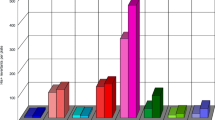Abstract
MOST studies on mutagenesis involve exposing a growing population of cells to a large dose of mutagen for a short period. In a natural environment, however, cells are probably exposed more often to a low concentration of mutagens for long periods. We therefore measured the accumulation of mutants in Escherichia coli cells growing continuously in the presence of very low concentrations of mutagens. Because many mutagens are highly unstable, it was necessary to devise a system in which cells could be continuously exposed to fresh mutagen. To do this we took advantage of the fact that certain bacteria can grow and divide while attached to the underside of a Millipore filter. This system was originally developed by Helmstetter and Cummings1 as a means of producing synchronous cells, because as growth medium is passed through the filter it carries away with it the unattached daughter from each pair of newly divided cells. The mutagen to be studied can therefore be stored in stable conditions and only mixed with the growth medium immediately before being passed through the filter; for example the mutagen N-methyl-N′-nitro-nitro-soguanidine (MNNG) can be stored in citrate buffer at pH 5.0 in which it has a half life of 40 h compared with 2.3 h in synthetic minimal media2,3. We had intended to determine the relationship between ambient concentration of various mutagens and resulting mutation rate. The first mutagen studied was MNNG and the results were totally unexpected.
Similar content being viewed by others
References
Helmstetter, C. E. & Cummings, D. Proc. natn. Acad. Sci. U.S.A. 50, 767–774 (1963).
Sussmuth, R. & Lingens, F. Z. Naturf 24b, 903–910 (1969).
Jimenez-Sanchez, A. & Cerda-Olmedo, E. Mutat. Res. 28, 337–345 (1975).
Witkin, E. M. Brookhaven Symp. Biol. 20, 17–55 (1967).
George, J., Devoret, R. & Radman, M. Proc. natn. Acad. Sci. U.S.A. 71, 144–147 (1974).
Miller, J. H. Experiments in Molecular Genetics (Cold Spring Harbor Laboratory, 1972).
Adams, M. H. Bacteriophages (Wiley-Interscience, New York, 1959).
Betlach, M. & Boyer, H. W. (in preparation).
Glover, D. New Techniques in Biophysics and Cell Biology, 3 (eds Pain, R. H. & Smith, B. J.) 125–145 (Wiley, London, 1976).
Author information
Authors and Affiliations
Rights and permissions
About this article
Cite this article
SAMSON, L., CAIRNS, J. A new pathway for DNA repair in Escherichia coli. Nature 267, 281–283 (1977). https://doi.org/10.1038/267281a0
Received:
Accepted:
Issue Date:
DOI: https://doi.org/10.1038/267281a0
- Springer Nature Limited
This article is cited by
-
Same modification, different location: the mythical role of N6-adenine methylation in plant genomes
Planta (2022)
-
Metallo-adaptive response: a unique survival strategy of plants under genotoxic stress
The Nucleus (2022)
-
Occurrence and repair of alkylating stress in the intracellular pathogen Brucella abortus
Nature Communications (2019)
-
Post-conditioning hormesis creates a “subtraction to background” disease process: biological, aging, and environmental risk assessment implications
Journal of Cell Communication and Signaling (2018)
-
Tiling array study of MNNG treated Escherichia coli reveals a widespread transcriptional response
Scientific Reports (2013)





